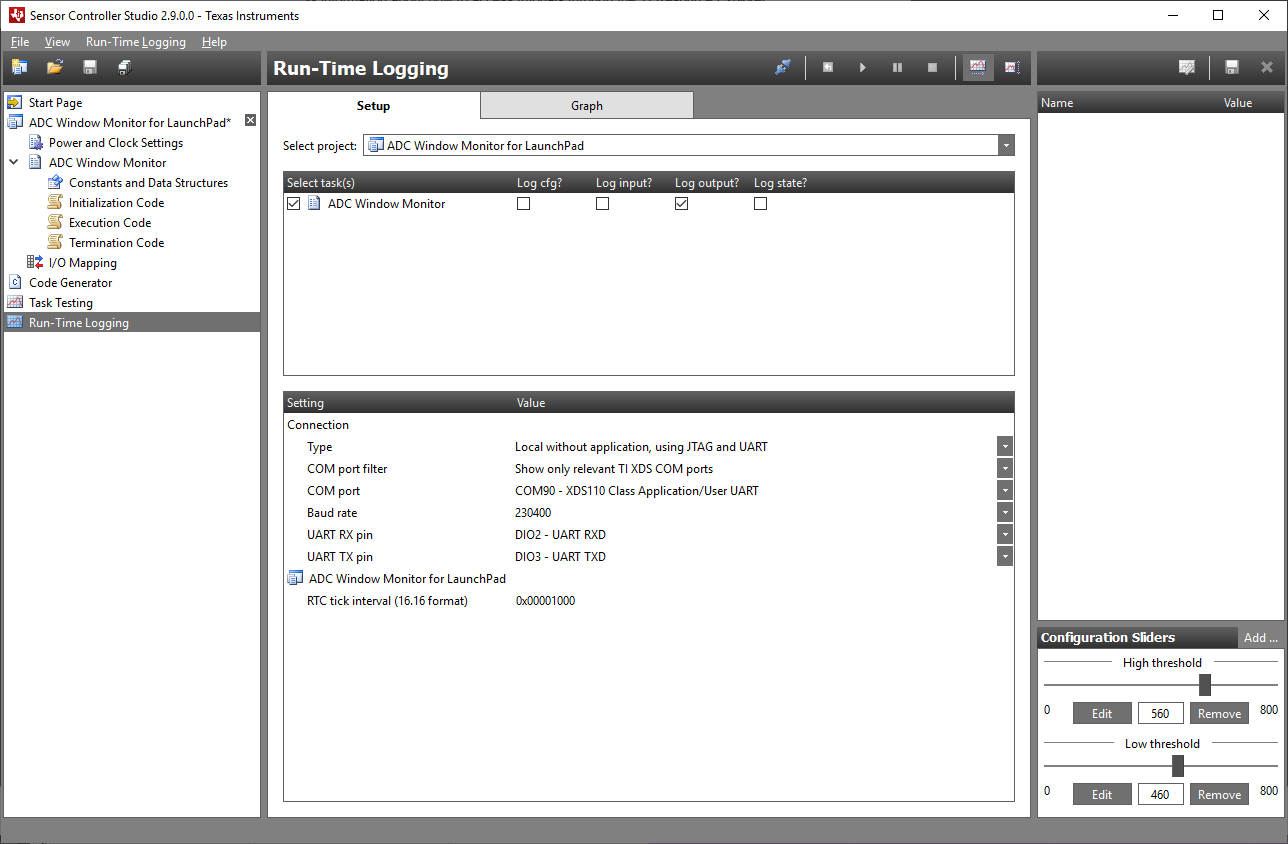SWRU439M October 2015 – April 2022
- Trademarks
- 1Introduction
- 2Overview
- 3Prerequisites
- 4Installation
- 5Sensor Controller Studio Tutorials
-
6Sensor Controller Studio Walkthrough
- 6.1 Start Page and Navigation
- 6.2 Documentation
- 6.3 Open the Example
- 6.4 Project Panel
- 6.5 Task Panel Settings
- 6.6 Constants and Data Structures Panel
- 6.7 Task Code Editor Panels
- 6.8 I/O Mapping Panel
- 6.9 Code Generator Panel
- 6.10 Compiling Example Applications in IAR or CCS
- 6.11 Task Testing Panel
- 6.12 Run-Time Logging Panel
- 7References
- 8Revision History
6.12 Run-Time Logging Panel
The Run-Time Logging panel is used to evaluate and optimize performance of Sensor Controller tasks running at full speed on a physical CC26xx or CC13xx device (see Figure 6-13).
 Figure 6-13 Run-Time Logging Panel
Figure 6-13 Run-Time Logging PanelDuring run-time logging, the Sensor Controller runs autonomously while the System CPU transfers data structure information to and from Sensor Controller Studio. The logged data structures can be displayed graphically in Sensor Controller Studio, or the data can be saved to file for external analysis.
The JTAG interface is used to download a generic System CPU application to the target. The run-time logging panel then uses UART to transfer commands and data.